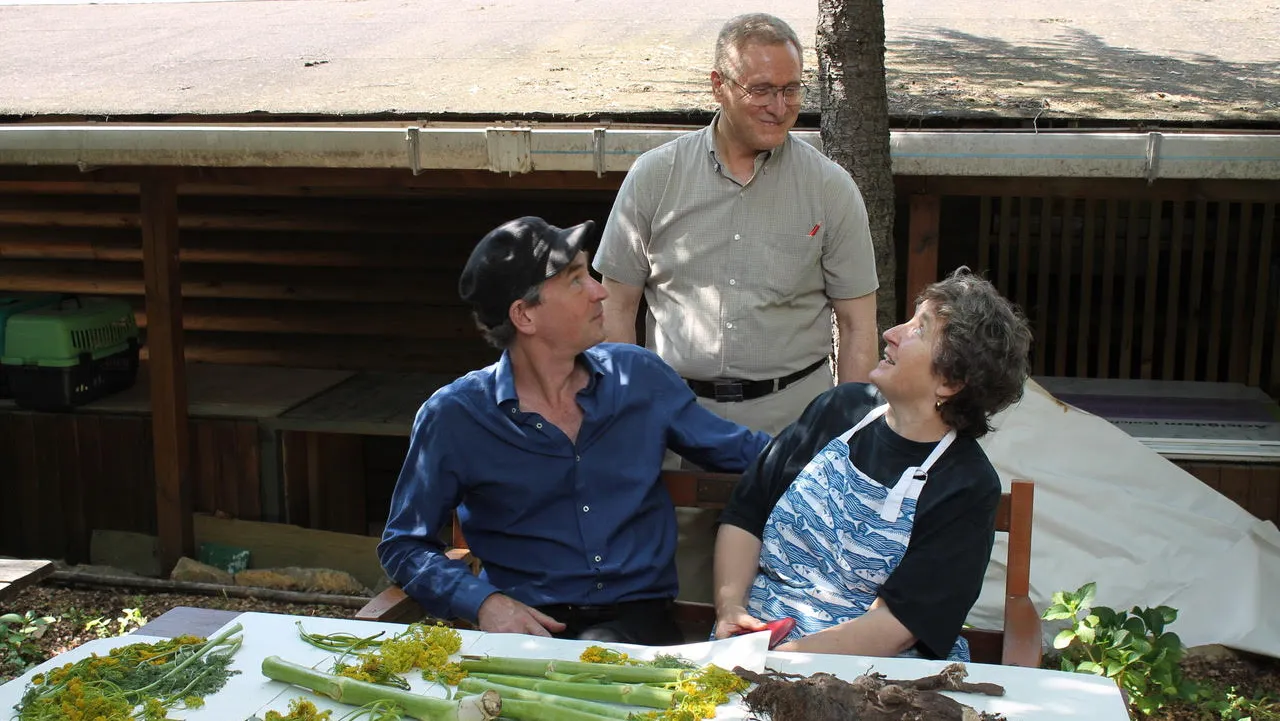In some circles, agriculture is a tough sell these days. There are many who believe our survival is linked to hyper-industrial food products, simulacra of the food we know. Others think we should leave Earth behind to populate other planets where we don't have to deal with the old fashioned paradigm of soil-based agriculture. Author Taras Grescoe's new book, The Lost Supper: Searching for the Future of Food in the Flavors of the Past, is his answer to these arguments. From the ancient plant silphion to the fermented fish sauce garum, from UK raw milk cheeses to the hogs of Ossabaw Island, he explores the diversity of small-scale agriculture.
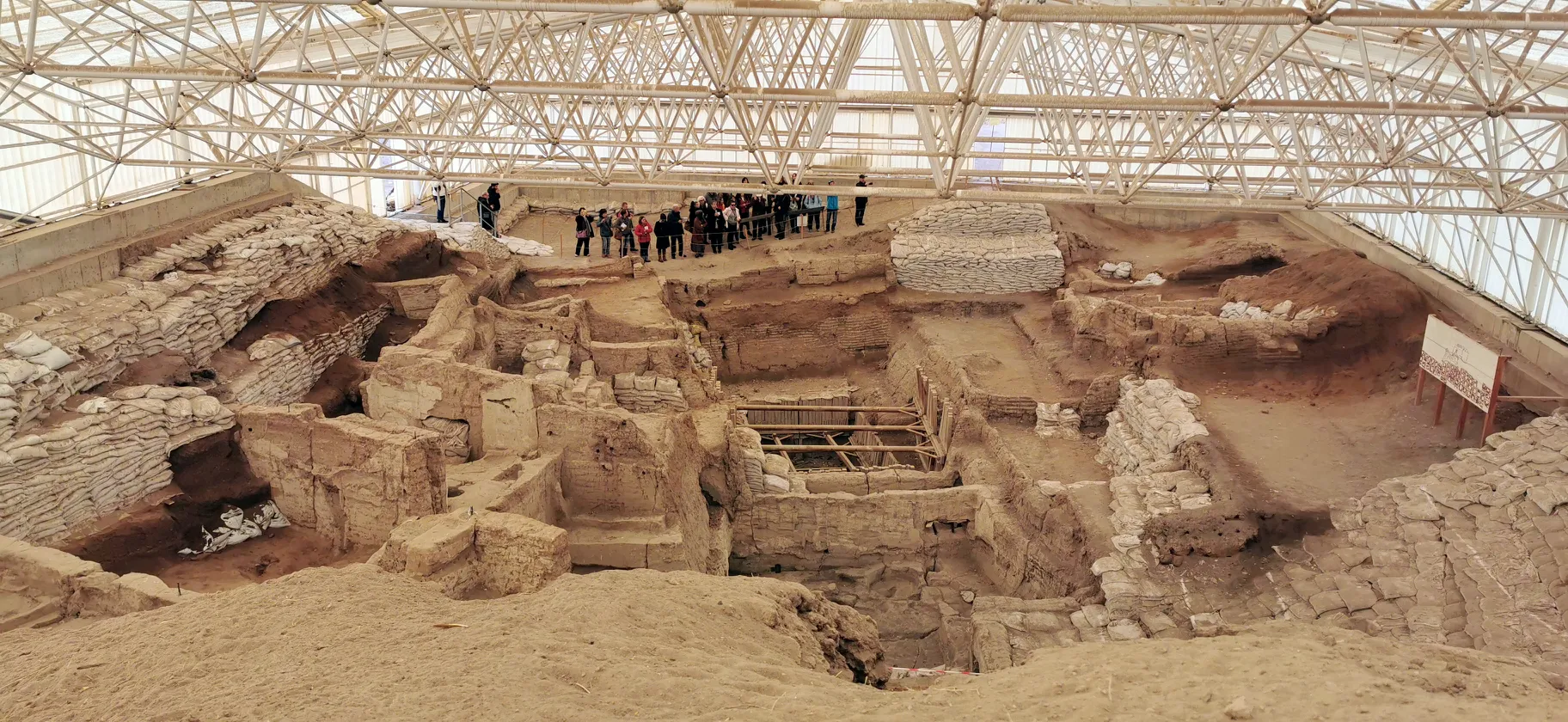
Çatalhöyük was a large Neolithic and Chalcolithic proto-city settlement in southern Anatolia, Konya, Turkey. Photo by Murat Özsoy/Wikimedia Commons
Evan Kleiman: Why do you begin your book with a description of a neolithic archaeological site outside of Konya in south central Turkey?
Taras Grescoe: Çatalhöyük, a very interesting place. This is a proto-city. It's one of the first places where people gathered together in large numbers around 10,000 years ago. For me, it was interesting because it was one of the places where we started baking daily bread. I went there and found the grindstones that they used to grind emmer wheat, which was gathered from the wild. Later on, it was domesticated but they made this amazing flatbread from it. Nonetheless, they kind of maintained a hunter gatherer lifestyle.
I started off with the idea, that is pretty common right now, that agriculture was humanity's fall from grace. As Jared Diamond, the historian and geographer, said: This was humanity's greatest mistake. I strenuously disagree with this. I don't think you can blame grains or bread.
I think you can blame what we've done to grains and bread and all the staples of our life. We've industrialized agriculture.
I wanted to start the book Çatalhöyük to show that in the beginning, there were different possibilities, different ways to go. There were societies that baked daily bread without being intensely hierarchical. I also wanted to point out that at that time, there was an incredible diversity of food consumed by people, even if they weren't hunter gatherers, even if they were semi-settled. One of the big concerns in my book, The Lost Supper, is the fact that we're losing this diversity, that we've gotten to a point in our species' history where we're only consuming a few grains, a few breeds of animals. That's a real danger for the future of food security.
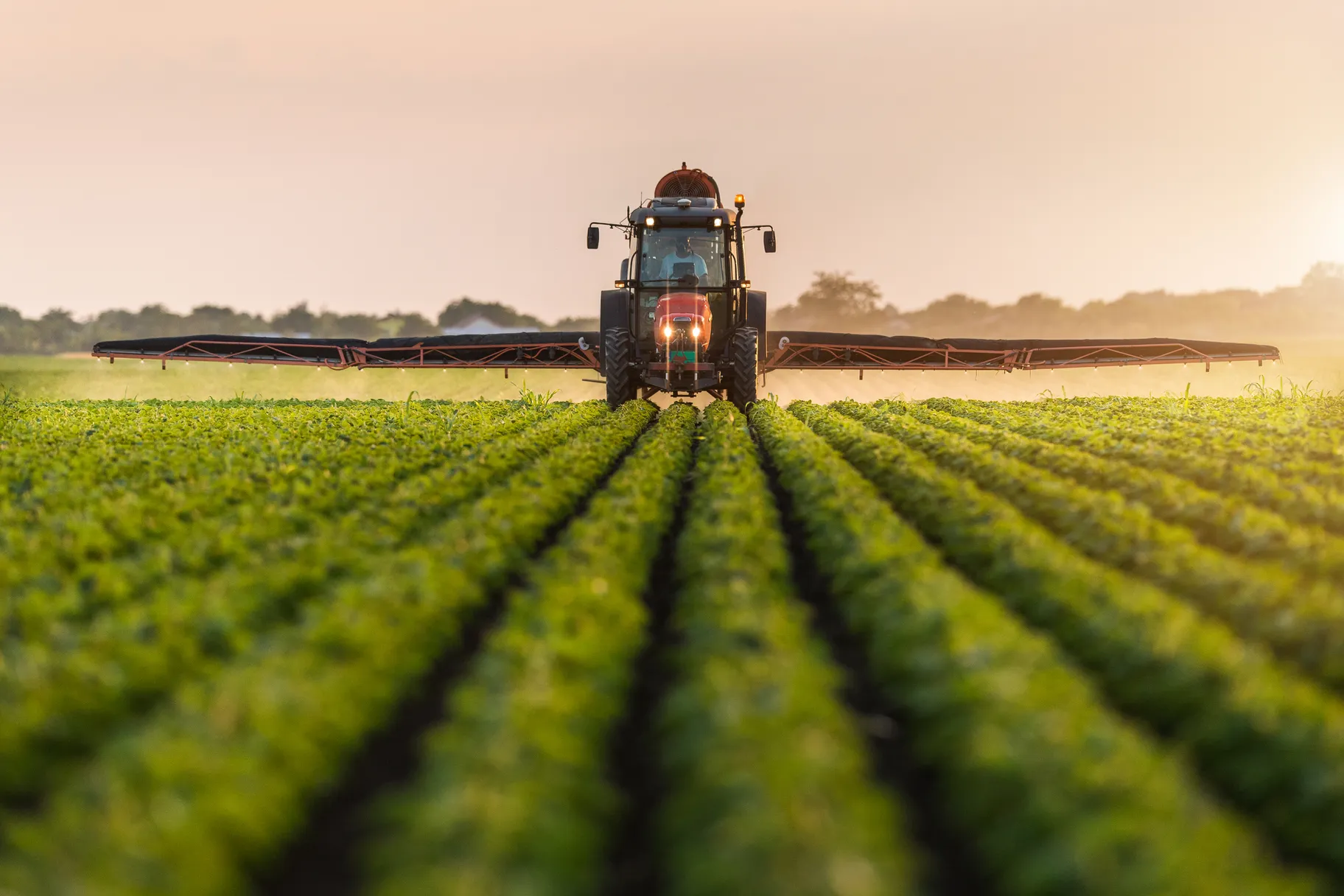
A tractor sprays pesticides on a soybean field. Photo credit: Shutterstock
Soil is everything and it seems that there are many examples of civilizations that failed, perhaps because they didn't pay it enough attention. In your opinion, where does the hope for the future reside?
It's definitely in the soil. I'm so glad there's a growing awareness of this because we've really impoverished the soil. The Green Revolution, which started in the 1960s, allowed us to feed many more mouths and that staved off famine. But it was all predicated on the use of chemical fertilizers and a lot of water. We're facing a situation now, in North America, that the soil just isn't cutting it anymore. It doesn't have the micro-organisms. It's basically a chemical construct. That's translated into the foods we eat and the lack of micronutrients we're getting in our bodies.
I believe that humans were specialists at finding these micro-nutrients. By eating a great variety of foods over the course of human history, it's estimated that we've eaten at least 10,000 plants that were a regular part of our diet. Now, only 150 are cultivated for food. That's a big problem. We're seeing a crisis of ill health in Western societies and industrialized societies. This book is my attempt to seek out people who are doing agriculture right — regenerative agriculture, mixed farms. In so many cases, these are the only farmers and food producers who are actually kind of happy and satisfied. Michael Pollan has written about this with Polyface Farm. I went to small farmers in the UK who are producing incredible Wensleydale cheese using a critically endangered species of cattle. There are farmers all around the world who get this.
On the other hand, we're being handed this line now that to save the wilderness, the future involves limiting the diversity of what we eat by turning to the complete industrialization of food. You recently had a guest on, George Monbiot, who was arguing for the idea of protein pancakes to feed the world. For me, that's the nightmare vision. What I wanted in The Lost Supper was to go back into the past and see the incredible diversity of foods that we ate and, not incidentally, the incredible intensity of flavor, which is one of the joys of discovering the foods of the past.
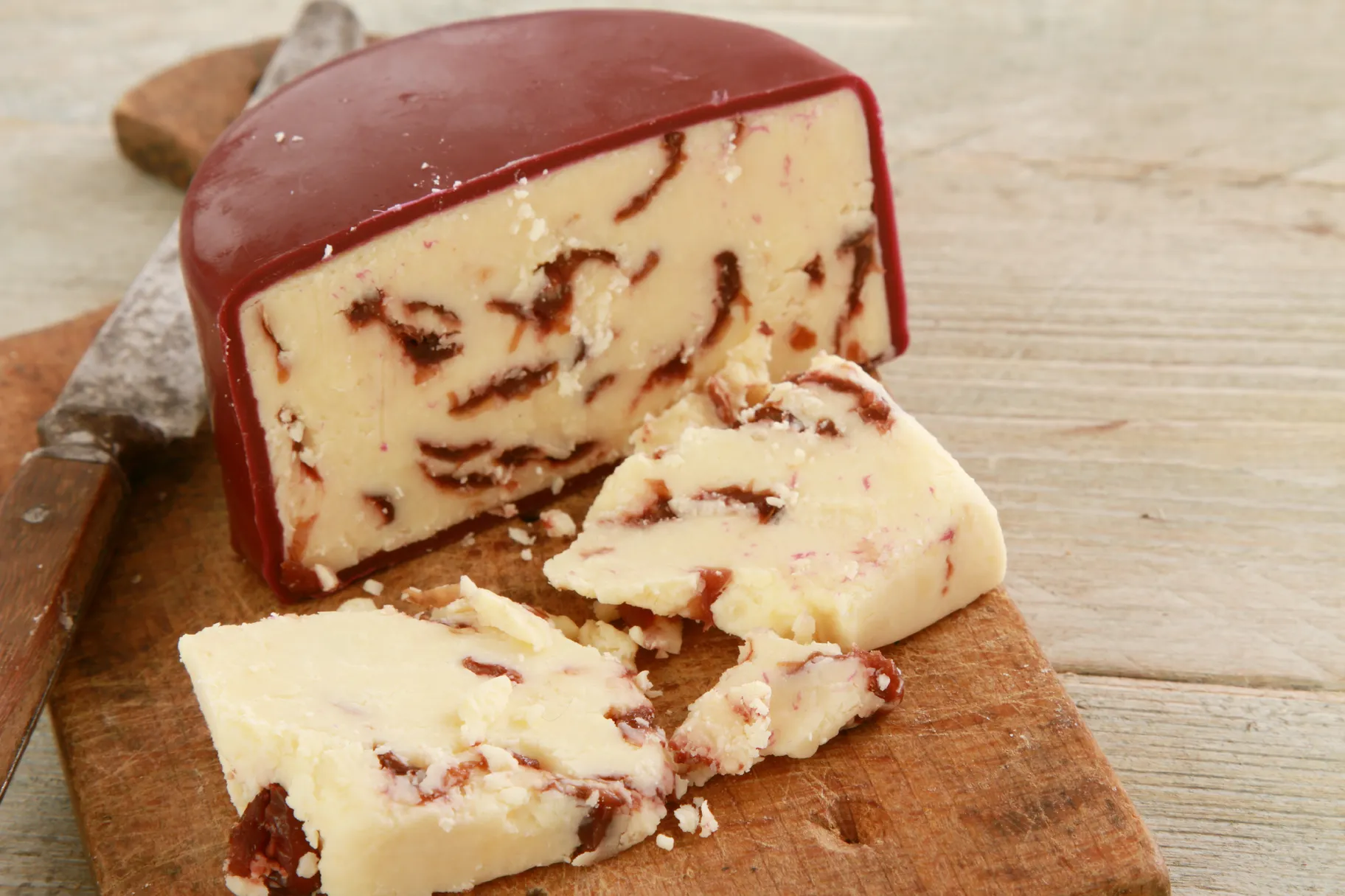
Wensleydale, the oldest named cheese in England, was originally a sheep's milk cheese, similar to Roquefort. Photo credit: Shutterstock
Let's talk about cheese. The dairy industry is as vilified as the industrial feedlot cattle industry. What did you see in the UK that gave you hope?
There are reasons to vilify it. 90% of the milk in North America comes from a single breed of cows, a Holstein Friesian.They're all descended, oddly enough, from the semen of just two bulls. So there's an incredible lack of biodiversity, which is really dangerous in the time of zoonotic animal pathogens. Fortunately, around North America and around the world, certain farmers are preserving these heritage breeds.
The oldest named cheese in England is Wensleydale. People who have watched that cartoon Wallace and Gromit might be familiar with it. It's a beautiful cheese. It can be a little chalky but in its original incarnation, it was actually a sheep's milk cheese, similar to Roquefort. I met this family of farmers, the Hattons in the Yorkshire Dales, who against great odds are producing this cheese using a breed of endangered cattle called Northern Dairy Shorthorns on beautiful northern meadowland. These are pasture-fed cows producing the cheese, which is sold at a hefty markup in the shops of London. They're actually some of the few farmers in the area who are making a satisfying living and maintaining the tradition of the family farm.
At the same time, they're enriching the soil. The manure of the cows that pasture freely is actually restoring biodiversity to those meadows. A lot of people say that we can't have livestock in farming. This is George Monbiot's argument. I strenuously disagree.
The impoverishment of the soil, which eventually brought down the Roman empire, brought down the empire of the Mayans, probably did in the Greeks after about a thousand years, is something that we're going to be experiencing pretty soon. Livestock was always a way of sustainably enriching the soil, preventing that sort of collapse.
One of the experiences that you had, which you wrote about in National Geographic, was when you tasted an incredibly rare plant in Istanbul called silphion. You call it the holy grail of food history, and you're one of the few people living who has tasted it. Tell us about it.
When I started researching this book, I knew that there was one plant that if I was lucky, I'd be able to seek out and find. It was just my luck that about halfway through the research, a professor of pharmacognosy at the University of Istanbul published a paper in which he claimed he'd rediscovered this plant called silphion. Silphion was an obsession of the Greeks and Romans. It was a flavoring agent. We see images of it on coins from what is now Libya from 2,000, 2,500 years ago. It was a striking plant with a ridged stalk. I was considered to be the food of the gods, one of the rarest things you could possibly eat. It seemed to have some kind of oozing white resin that was mixed with flour then used in most of the recipes of this book called Apicius, which is a compendium of Roman recipes. But it disappeared.
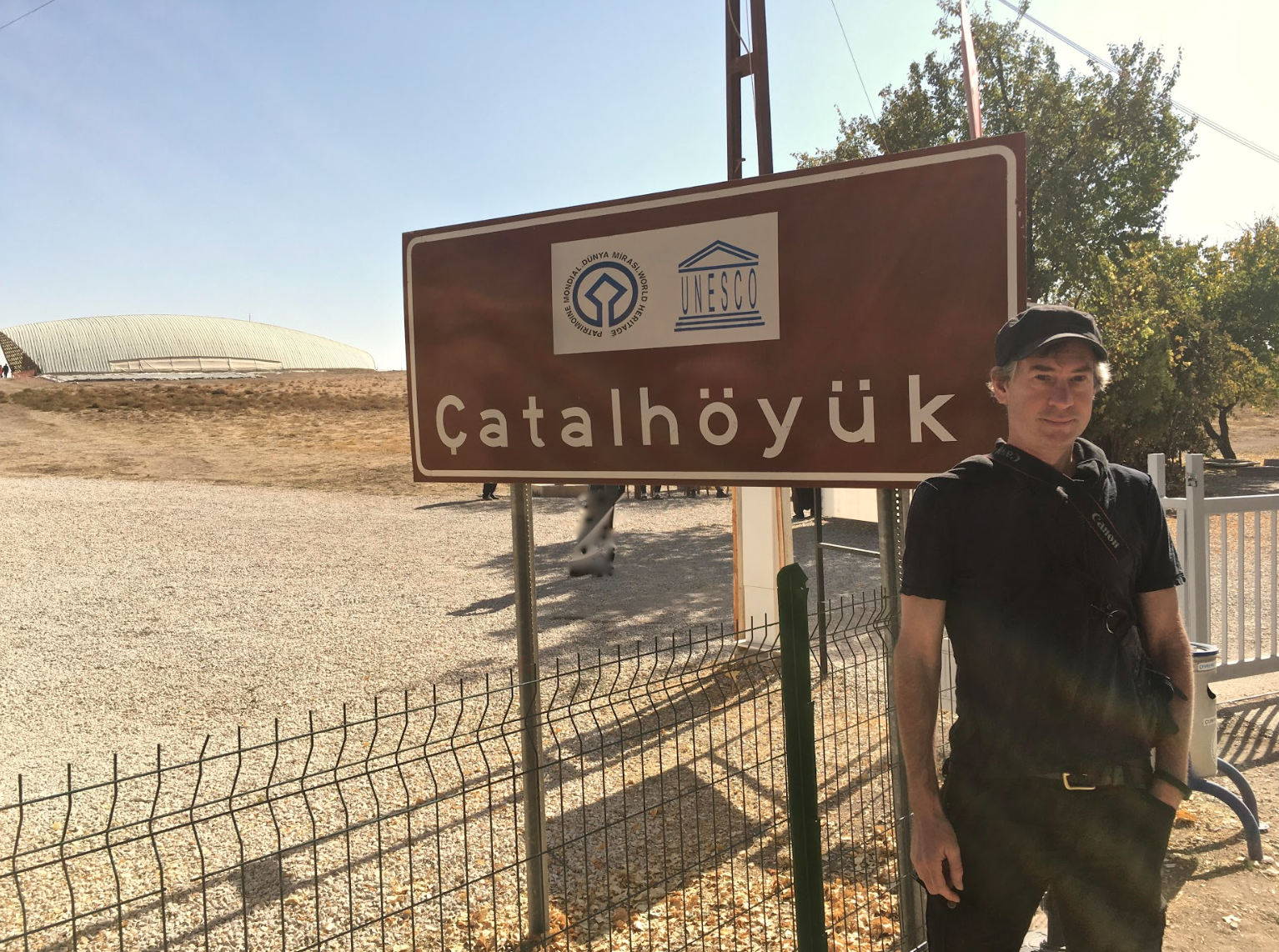
Taras Grescoe, the author of "The Lost Supper," at Çatalhöyük in what is now Turkey. Photo credit: Mahmut Miski
According to Pliny the Elder, who died in 79 AD, the emperor Nero ate the last stalk of it. So when I heard that this professor was claiming to have discovered it, I booked a flight to Istanbul, took the high speed train to Konya. We rode into the flanks of this extinct volcano, where this plant had been protected by stone walls. It was formerly a Greek community. I was astonished to see this plant, which has these beautiful, yellow flowers and produces this amazing, intoxicating smell, actually growing. That was my first trip.
On the second trip, I talked to this expert in ancient Roman cookery, Sally Grainger, who lives in England, to fly over. She brought her mortar and pestle. She brought her garum, which is this fermented fish sauce, and a bunch of recipes that she recreated in this botanical garden in Istanbul with professor Mahmut Miski at her side. I was one of the tasters. We did controls where there was no silphion resin in the dishes.
It was amazing. We all agreed that it imparted this intense flavor. There's almost a piney, resiny smell to it. It's a flavor harmonizer. It elevated the dishes. It's very hard to describe. We all agreed that further work needs to be done, which Sally is doing. She's obtaining resin and creating new recipes out of it.
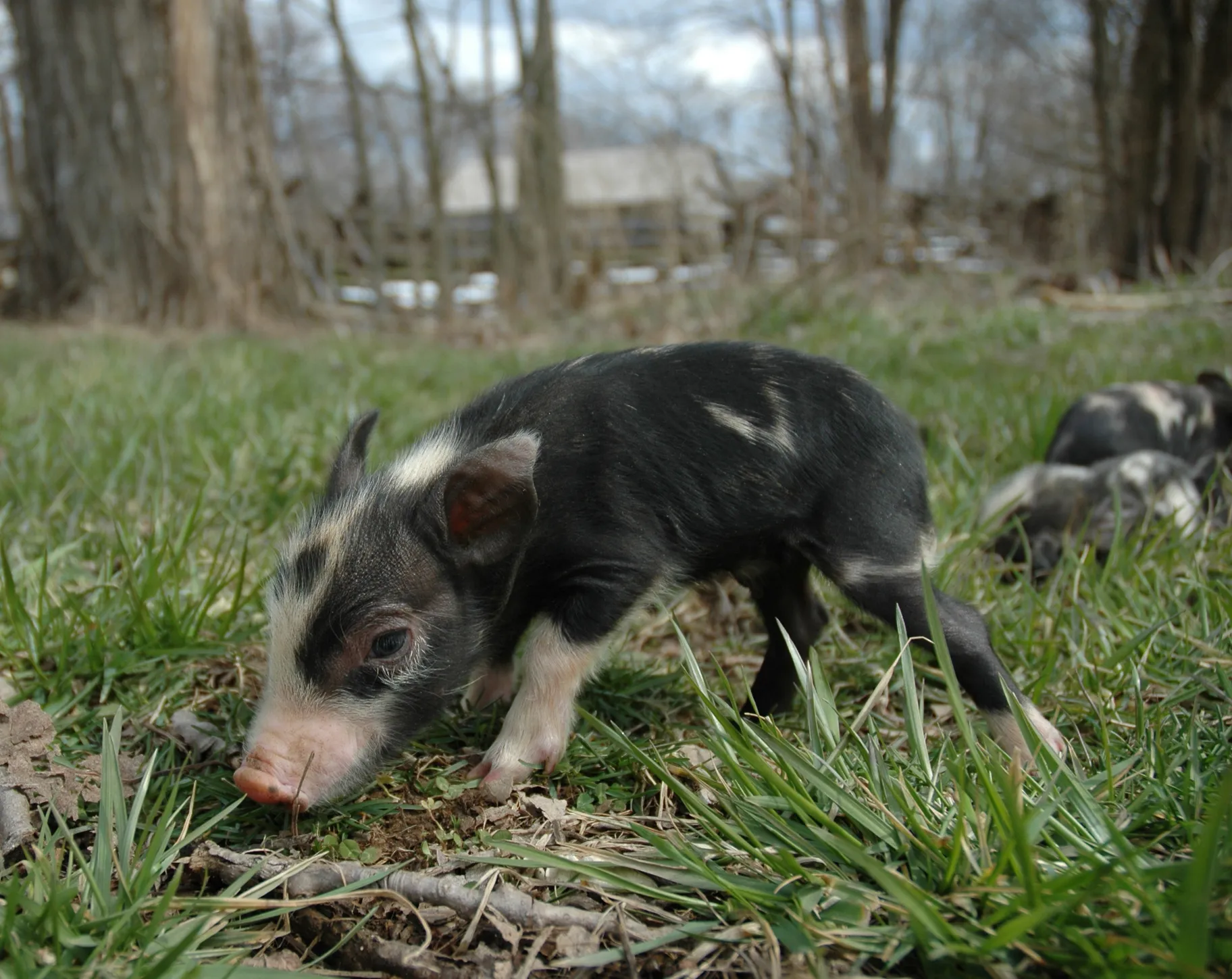
An Ossabaw Island heritage piglet. Photo credit: Shutterstock
The problem with this plant, which is called Ferula drudeana, is that there are very few existing examples of it in the wild. They're trying to propagate it in these gardens but it resists cultivation, which was the problem 2,000 years ago. This is one of the few foodstuffs in the book where I say we should not be over-consuming it because we can actually drive it to extinction. For almost everything else in the book, the idea is that to encourage agrobiodiversity, you've got to eat it, you've got to bring it back. We have to bring back the cattle breeds, the pig breeds like the Ossabaw Island hog, rare cultivars of olives and wheat, that kind of thing. By taking an interest in their flavors and their deliciousness, by seeking out producers who can bring them to market, we help preserve them. The one exception was silphion, which was just too much of a fascinating story for me to ignore.
We're deep in the destruction caused by unlimited agricultural growth and all too susceptible to answers that praise continued growth within an industrial paradigm. I have to say that even though I chaired the LA chapter of Slow Food for eight years, it's hard to see how small ag operations, no matter how well run, are ultimately the solution.
That's a tough one. There's a whole polemic going on right now about this. I mean, on the one side, you have your George Monbiot, who says we'll be synthesizing food using nuclear power and hydrogen, we'll all be living in cities and the advantage of that is we can withdraw from the wilderness and contemplate wildlife at our leisure. The other vision of it, which is put forth by people like Chris Smaje, a small farmer in England, is agrarian localism.
I think we won't have much of a choice. I think we're confronting a pretty dire future in terms of climate events, including pandemics. I think it's going to make us rethink the way we concentrate in cities. I think there is a growing disgust with the way technology is taking over our lives and the idea that technocrats will snatch something out of the hat, like protein pancakes synthesized in Helsinki, to save humanity or that we'll all go to Mars, the Elon Musk version, and cultivate our vegetables there.
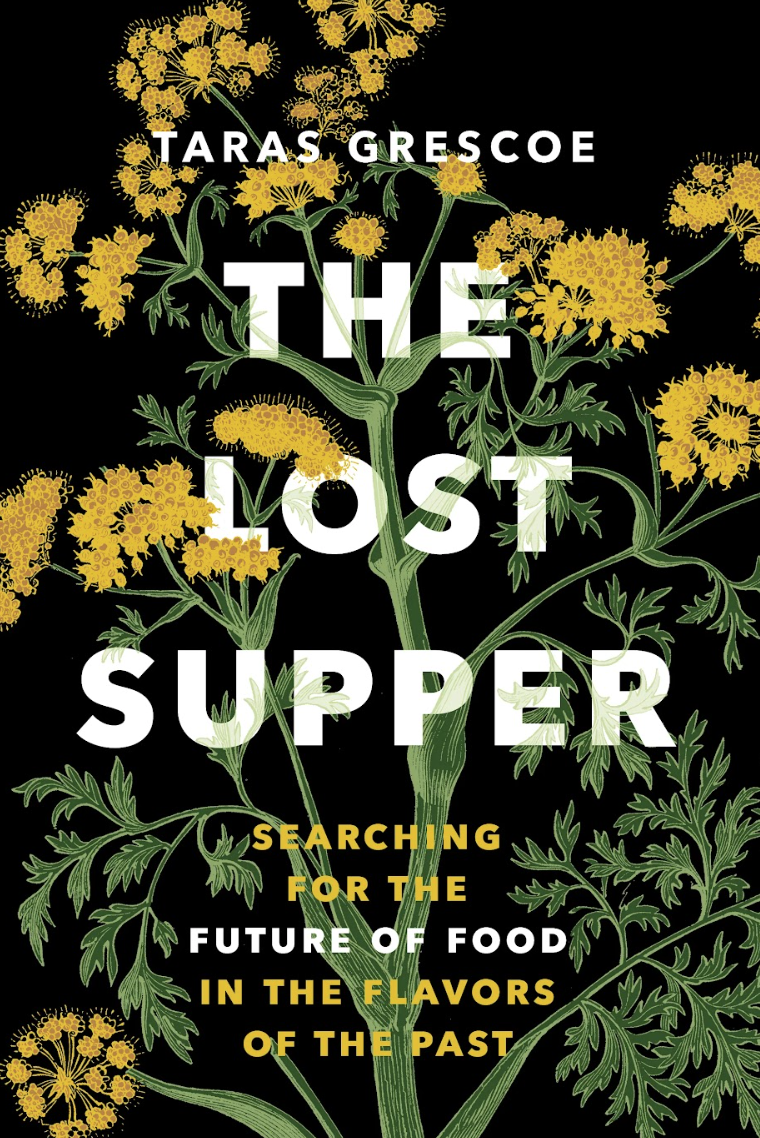
The cover of "The Lost Supper: Searching for the Future of Food in the Flavors of the Past," by Taras Grescoe. Photo credit: Shutterstock
I have no solution. I just look into the future and wonder what the world's gonna be like for my children. I'm not trying to sell either one of these things. I'm just lamenting what we've lost.
I do believe that by the force of things, we are going to come back to smaller scale agriculture because industrial agriculture isn't working. People might be living to 70, 80, 90 years, but their health spans are far lower. For the first time in, I don't know what it is, 200 years, children are living shorter lives than their parents in the United States. We're reaching a crisis and it's all soil and food-driven.
We can hold out these great technological features of everyone subsisting on energy-efficient protein made from bacteria but I don't have much faith in that. In the book, I look at all of these solutions that go back to the 1920s and '30s — we'll all be eating algae, that kind of thing. They don't come to pass. What comes to pass is food produced by the sun growing from soil, which we care for, and that is the future.
I'm not developing a giant scheme for food security in the future except to say that in diversity lies resiliency, and that's what we've lost. That's what's been robbed from our foodways, from our supermarkets, from our markets, from our farmers markets. That's what you can bring back by seeking these things out, or better yet, as Wendell Berry said, learning some of the rudiments of food preparation yourself, even at the smallest scale, making bread, pickling, that kind of thing.

